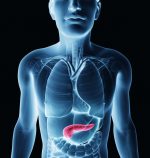Incidence of breast cancer higher in women with primary Sjögren’s: Study
Diabetes, high anti-SSA autoantibody levels tied to higher breast cancer risk

The incidence of breast cancer is higher in women with primary Sjögren’s syndrome than the general population, a study from Taiwan indicates.
Diabetes and high levels of anti-SSA autoantibodies were associated with a higher risk of developing breast cancer, according to “Risk analysis of breast cancer and breast fibrocystic change in female primary Sjögren’s syndrome patients,” which was published in Medicine.
Primary Sjögren’s syndrome (pSS) is a chronic inflammatory autoimmune disease wherein a misdirected immune attack is launched against the moisture-producing glands. The disease is also marked by several self-targeting antibodies, including anti-SSA and anti-SSB antibodies. While it mainly affects tear and salivary glands, other glands can also be affected, including in the breast.
Sjögren’s has been associated with an increased risk for some types of cancer, including non-Hodgkin lymphoma, a blood cancer.
Here, researchers investigated whether Sjögren’s is associated with an increased risk for breast fibrocystic disease, where noncancerous (benign) lumps develop, and breast cancer. The analysis included 282 women with pSS (mean age, 54.8), who were recruited at the Cathay General Hospital, Taiwan from January 2013 to December 2018.
Higher incidence of breast cancer
A review of medical records revealed 26 patients had a history of cancer; 19 were diagnosed during the study. This corresponds to a cancer incidence rate of 1,123 cases per 100,000 person-years among pSS patients, which is higher than the incidence rate among women in the general population in Taiwan (271.3 cases per 100,000 person-years). Person-years is a composite measure that takes into account the number of people in a study and the amount of time they were followed. For example, 100,000 person-years refers to data gathered from 100,000 patients followed for a year.
Breast cancer was the most common cancer, with 11 patients (42.3%) diagnosed in the study. This corresponded to an incidence rate of 650 cases per 100,000 person-years. Cervical cancer was the second most common cancer (three patients, 11%), followed by uterus, lung, and gastric cancer, each with two cases (8%). One case of liver cancer, B-cell lymphoma, thyroid cancer, rectal cancer, colon cancer, and tongue cancer were also registered.
A statistical analysis revealed pSS patients with diabetes had a significantly higher risk — 10.4-times higher — of developing breast cancer. High levels of anti-SSA autoantibodies were also identified as a risk factor for breast cancer.
The researchers also reviewed data from 62 patients who’d undergone a breast ultrasound examination. Fifty-six had signs of fibrocystic disease, with 22 diagnosed during the study. The incidence of fibrocystic disease among pSS patients was 1,300 cases per 100,000 person-years. Breast fibrocystic disease in pSS was associated with a lower risk of breast cancer.
“Our results appear to be similar to those in some recent reports and consistent with the increased risk of [breast cancer] in the Asian population of Sjögren’s syndrome,” the researchers said.







